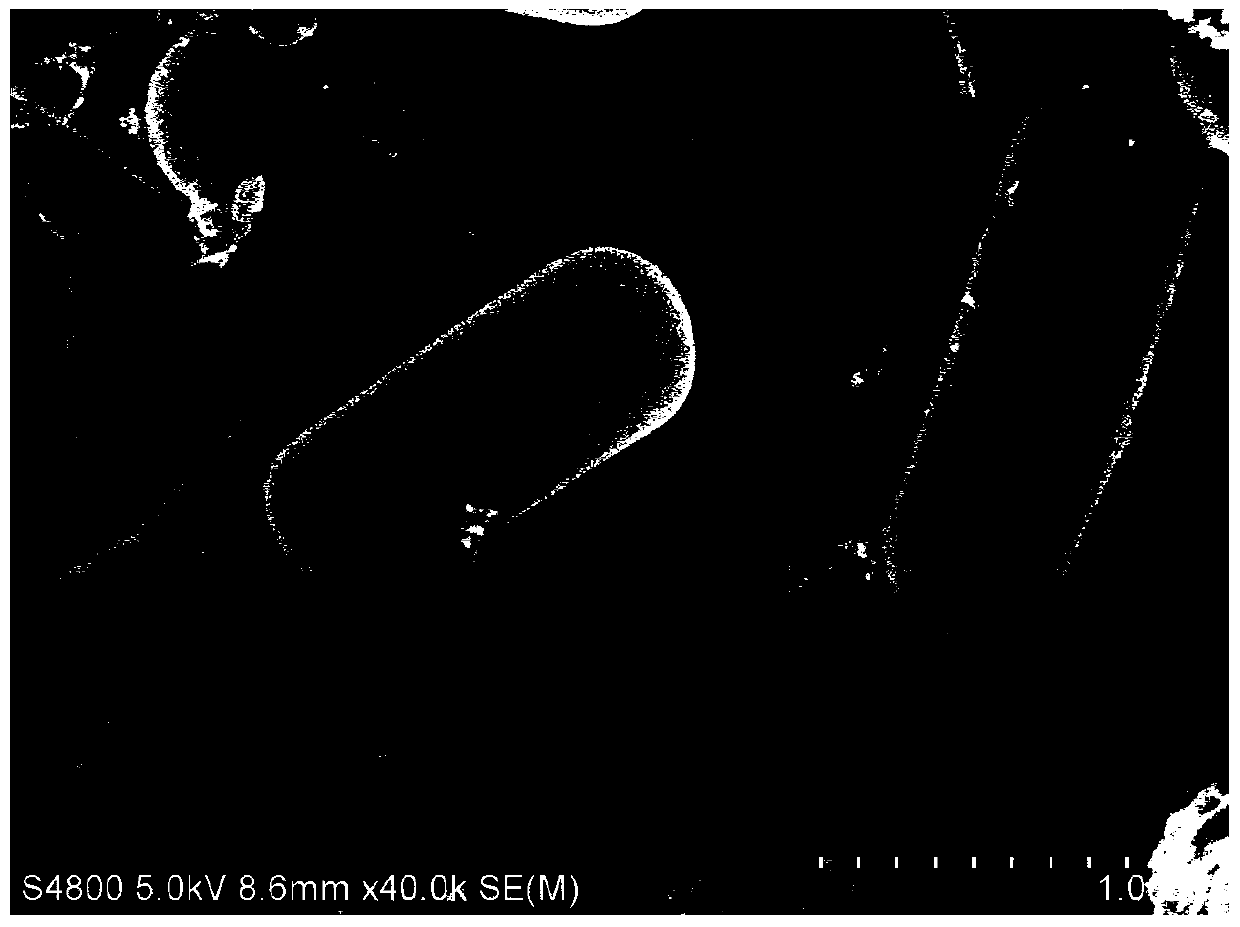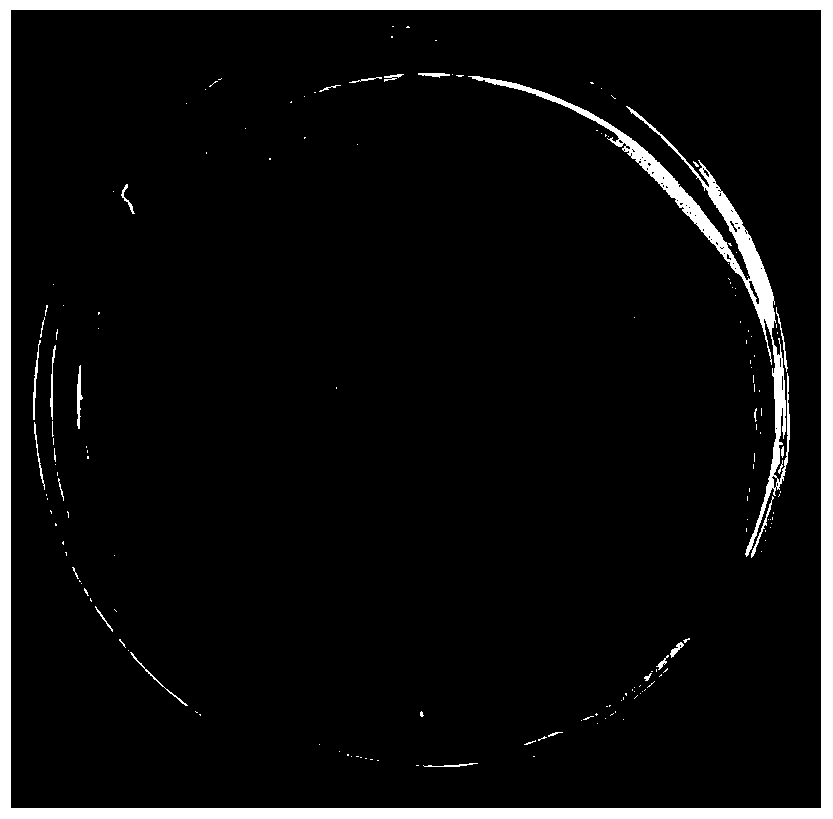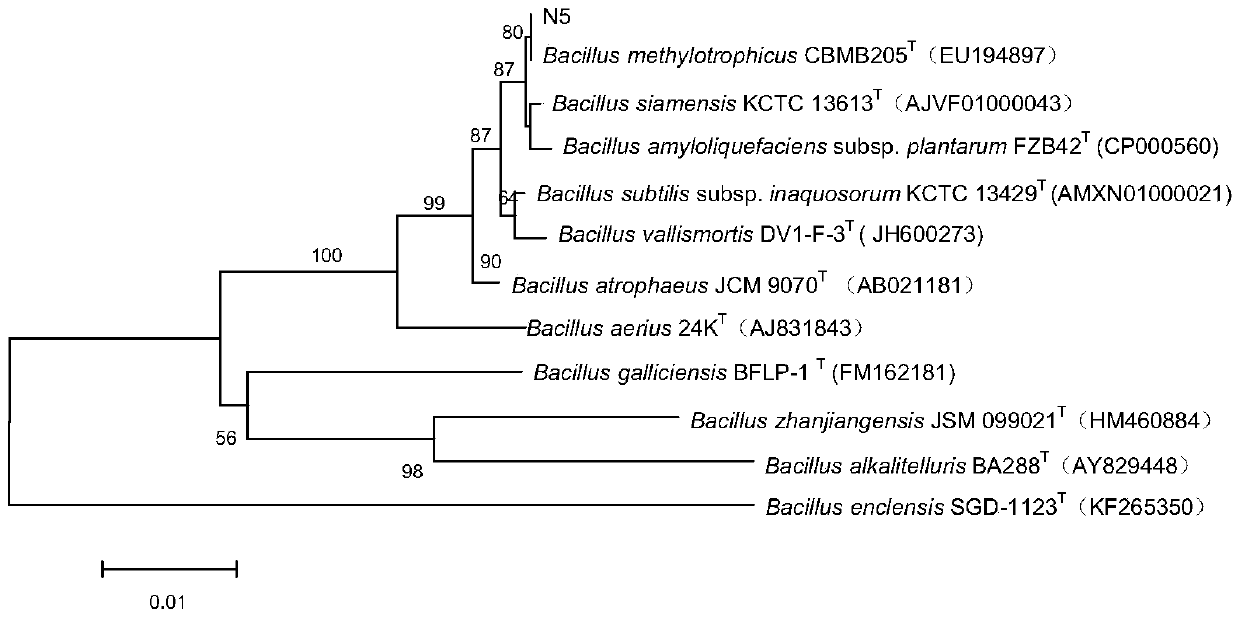Methylotrophic bacillus strain and its application
A methylotrophic, bacillus technology, applied in the application, bacteria, fungicides and other directions, can solve the problem of single function of bacillus, and achieve good development and application prospects, high effect, and large biological control effect.
- Summary
- Abstract
- Description
- Claims
- Application Information
AI Technical Summary
Problems solved by technology
Method used
Image
Examples
Embodiment 1
[0027] The screening and identification of methylotrophic Bacillus strain CGMCC No.10779 includes the following steps:
[0028] (1) Activation of pathogenic bacteria
[0029] The inoculation needle uses aseptic operation to hook a small amount of anthracis anthracis hyphae and medium to be activated into the center of the PDA plate, inoculate 3 pieces respectively, and conduct constant temperature culture at 26°C to prepare a spore suspension;
[0030] (2) Sample collection and preparation of soil suspension
[0031] Collect bacterial samples from the soil of willow fields in Xuancheng area. When collecting soil samples, first remove the topsoil and take the soil sample at a depth of 5-20cm; use the dilution method to separate, weigh 10.0g soil sample and pour it into 100ml sterile water Shake well in the Erlenmeyer flask, then put it in a water bath at 80℃ to heat (shaking every 3min), put it in cold water to cool down after 20min, and then gradually dilute to prepare a soil suspensi...
Embodiment 2
[0053] Effect of Methylotrophic Bacillus strain CGMCC No. 10779 on the growth of Colletotrichum gloeosporioides, Colletotrichum gloeosporioides, Fusarium wilt of watermelon, Fusarium wilt of cotton and pathogen of corn leaf spot
[0054] 2.1 Determination of the inhibitory rate of methylotrophic Bacillus strain CGMCC No.10779 against Colletotrichum gloeosporioides, Colletotrichum gloeosporioides, Fusarium wilt of watermelon, Fusarium wilt of cotton, and pathogen of corn leaf spot
[0055] The plate confrontation method was used to detect the inhibitory effects of the methylotrophic Bacillus strain CGMCC No.10779 on Colletotrichum gloeosporioides, Colletotrichum gloeosporioides, Fusarium wilt of watermelon, Fusarium wilt of cotton and pathogen of corn leaf spot. The test method is: inoculate the plant pathogens on the PDA plate, culture at 26°C for 3 days, use a punch with a diameter of 5 mm to pick out the colonies with consistent growth, spot them in the center of the PDA plate, an...
Embodiment 3
[0066] Effect of methylotrophic Bacillus strain CGMCC No.10779 on the hyphae of Colletotrichum gloeosporioides and watermelon wilt pathogen
[0067] Inoculate anthracnose and watermelon fusarium wilt pathogens on the PDA plate. After incubating at 26°C for 3 days, use a punch with a diameter of 5 mm to pick out the colonies with uniform growth and spot them in the center of the PDA plate, 2 cm from the side of the pathogen Streak access to the methylotrophic Bacillus strain CGMCC No.10779, use only pathogenic bacteria as the control, 3 replicates for each treatment, culture at 26°C; wait until the pathogenic bacteria in the control group grows over the entire petri dish, observe its inhibition For the presence or absence of bacterial bands, observe its inhibitory effect. The mycelium was selected, fixed with glutaraldehyde, processed by conventional methods, and observed by scanning electron microscope. Put the selected mycelium block (5mm×5mm, thickness about 3mm) into 4% gluta...
PUM
 Login to View More
Login to View More Abstract
Description
Claims
Application Information
 Login to View More
Login to View More - R&D
- Intellectual Property
- Life Sciences
- Materials
- Tech Scout
- Unparalleled Data Quality
- Higher Quality Content
- 60% Fewer Hallucinations
Browse by: Latest US Patents, China's latest patents, Technical Efficacy Thesaurus, Application Domain, Technology Topic, Popular Technical Reports.
© 2025 PatSnap. All rights reserved.Legal|Privacy policy|Modern Slavery Act Transparency Statement|Sitemap|About US| Contact US: help@patsnap.com



